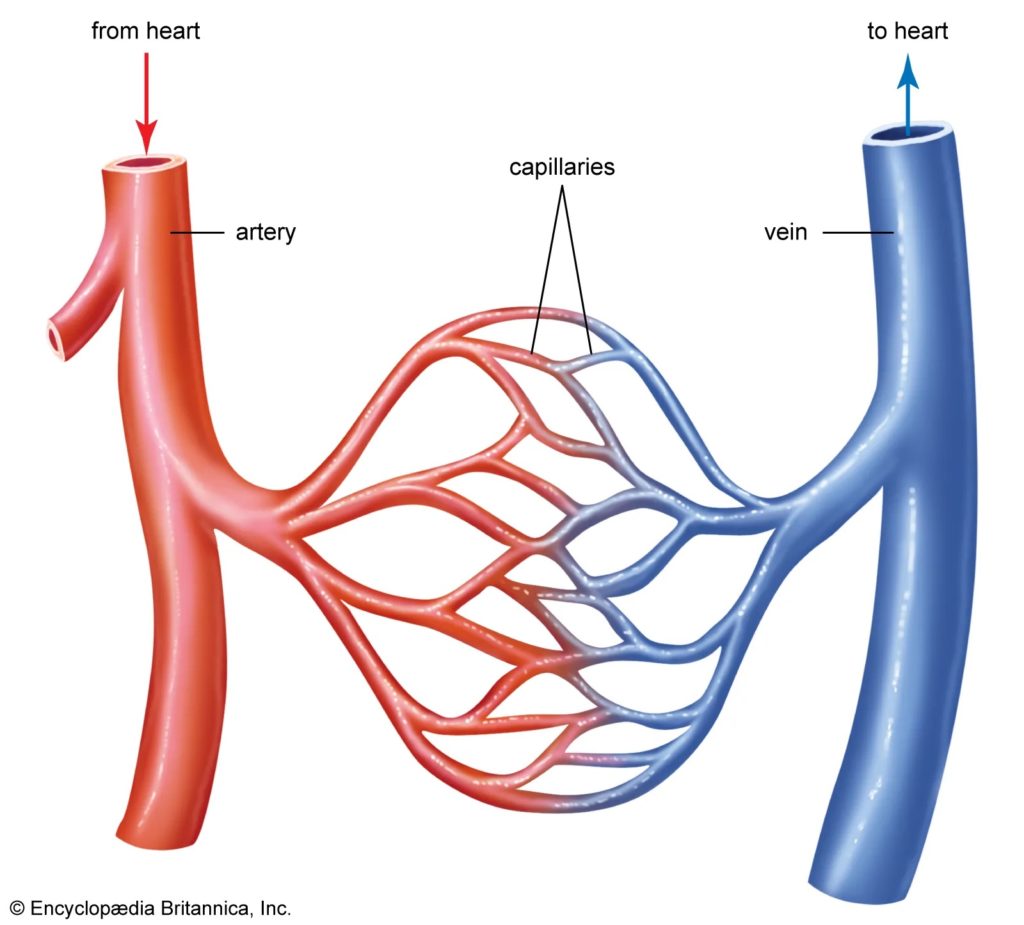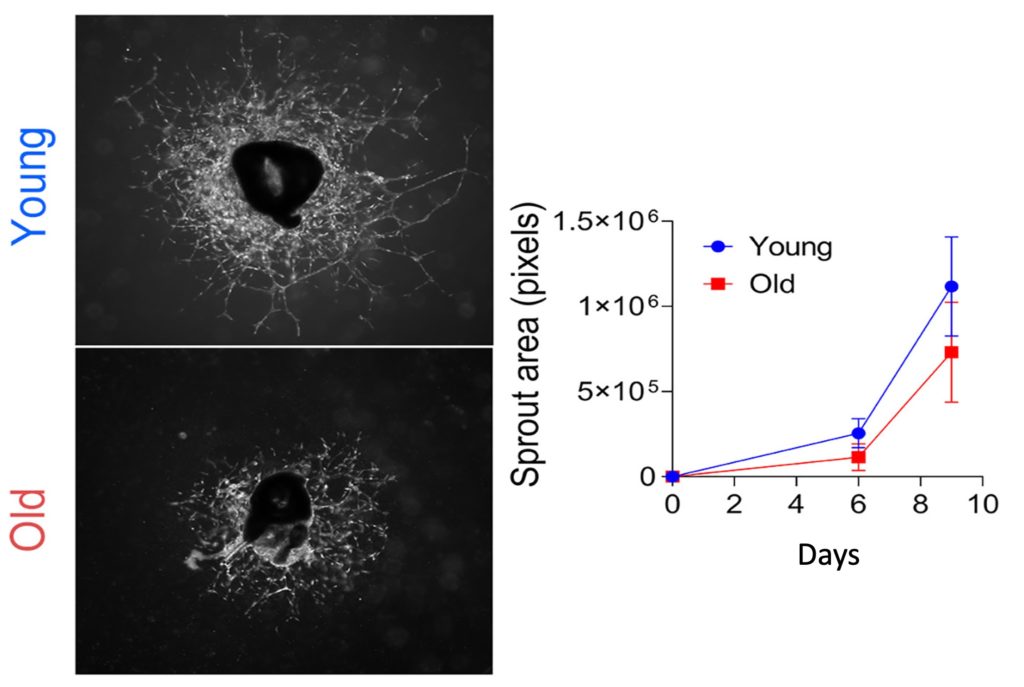New Harvard Study Shows NMN Supplement Enhances Blood Vessel Formation
The NAD+ (nicotinamide adenine dinucleotide) precursor NMN (nicotinamide mononucleotide) restores impaired blood vessel formation in old sedentary mice.
Highlights
- Aging impairs the formation of new blood vessels.
- NMN counteracts age-related impairments in blood vessel formation.
- Combining NMN with Lion’s Mane mushrooms could have additive effects.
There are arguments over whether the deterioration of our blood vessels, where blood courses through our body, is the cause of aging. If so, preventing or reversing the deterioration of our blood vessels could contribute to delaying or arresting aging. In a new study, Kiesworo and colleagues from Switzerland, Harvard Medical School, and Princeton University demonstrate that NMN can counteract blood vessel deterioration by enhancing the formation of new ones.
Aging Impairs Blood Vessel Formation
Our arteries, through which oxygenated blood courses from our heart, branch into ever smaller blood vessels, of which capillaries are the smallest. It is from our capillaries that oxygen and nutrients replenish the cells of our body. In turn, deoxygenated blood travels back to the heart through our veins.

Helping to confirm that blood vessels deteriorate with age, Kiesworo and colleagues found that, compared to young mice, aged mice have fewer capillaries in their leg muscles. Moreover, the formation of new blood vessels was reduced 2-fold in aged mice compared to young mice. New blood vessel formation was assessed by observing excised aorta slices. When placed into a nutrient-rich Petri dish, aorta slices sprout new blood vessels.

The formation of new blood vessels is highly dependent on endothelial cells that line blood vessels and other tissues. For this reason, the researchers examined the nature of aged endothelial cells. To model aging, the endothelial cells were replicated at least 15 times in a dish. These “aged” endothelial cells were then compared to “young” endothelial cells, which were replicated less than ten times.
To gain insight into how endothelial cells may be disrupted with age, the researchers measured differences in gene activation between aged and young endothelial cells. The results hinted at there being disruptions in how aged endothelial cells convert glucose into cellular energy — ATP (adenosine triphosphate). Without sufficient levels of ATP, no cell can function properly. Thus, disruptions in how aged endothelial cells convert glucose into ATP could explain how new blood vessel formation is impaired.
Counteracting Impaired Blood Vessel Formation with NMN
Upon further inspection, Kiesworo and colleagues honed in on which enzymatic reactions that convert glucose into ATP are disrupted in aged endothelial cells. They found that many of the disrupted reactions are dependent on NAD+. Indeed, NAD+ is required for six of the enzymatic reactions needed to metabolize glucose into ATP.
Since NMN is a precursor to NAD+ and elevates NAD+ levels, the researchers tested whether NMN could restore the ability of aged endothelial cells to convert glucose into ATP. The results showed that NMN increased cellular respiration, the process our mitochondria use to produce ATP. Moreover, NMN improved glycolysis, the process our cells use to convert glucose into pyruvate, a compound used to make ATP inside mitochondria.
Importantly, treating aged endothelial cells with NMN increased ATP production. With sufficient levels of ATP, endothelial cells can function normally and proliferate. Indeed, NMN was shown to increase the proliferation of aged endothelial cells. Furthermore, to test whether NMN could restore new blood vessel formation, the researchers treated aorta slices from aged mice with NMN. The results showed that NMN restored new blood vessel formation, suggesting it counteracts age-related disruptions in blood vessel formation.

Challenging Previous Notions of Blood Vessel Aging
New blood vessel formation depends on both the proliferation and migration of endothelial cells. After they proliferate, the endothelial cells migrate and build new blood vessels. However, while the aged endothelial cells exhibited poor proliferation, the researchers found they could still migrate. Thus, the researchers concluded that age-related impairments in blood vessel formation are due to a lack of endothelial cell proliferation, and not migration, saying,
“Our research challenges the conjecture that aging diminishes endothelial cells’ ability to sense and respond to [VEGF] signaling.”
Lion’s Mane and NMN to Combat Vascular Aging
NMN has previously been shown to improve new blood vessel formation in old mice while also increasing their endurance. Moreover, the study showed that hydrogen sulfide enhances the effect of NMN. Additionally, another study showed that hydrogen sulfide levels are elevated in cells treated with ergothioneine, a compound found in lion’s mane mushrooms. The study showed that ergothioneine boosts NAD+ levels by elevating hydrogen sulfide levels. Together these studies suggest that combining ergothioneine with NMN could have an additive effect on boosting intracellular NAD+ levels. In turn, supplementing with both ergothioneine and NMN could potentially enhance blood flow and endurance by counteracting disruptions in new blood vessel formation.

